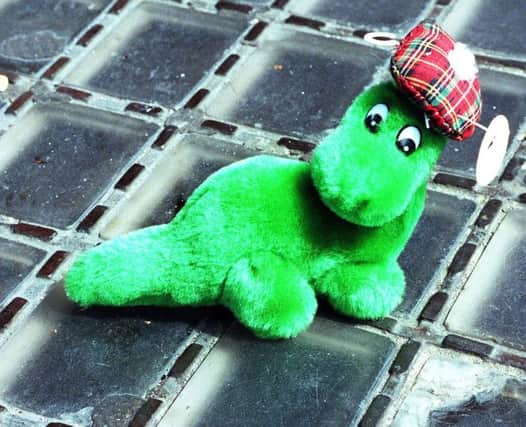Chinese asked to rename Scots tourist favourites


Now tourism chiefs have launched a campaign to create Mandarin names for Scottish places and attractions in a bid to encourage more Chinese visitors to Scotland.
In China it is usual to give names to celebrities, places and foods that offer a literal description of what Chinese people envision when thinking about them. Often the translations combine descriptions with words whose sounds suggest the object being described.
Advertisement
Hide AdAdvertisement
Hide AdA list of 23 Scottish places and objects has been drawn up and Mandarin speakers invited to suggest names. British people and places already granted monikers in Mandarin include The Beatles – dubbed “Pi Tou Shi”, meaning “men with long hair” – and Mr Bean, whose name “Han Dou” translates as “Funny Beans”.
Tourist attractions given Mandarin names include Stonehenge, which is known as “Jui Shi Zhen” meaning “huge stone clusters” and “Bai Jin Han Gong”, or Buckingham Palace, which translates as “a white, gold and splendid palace” and is pronounced similarly to its English version.
CONNECT WITH THE SCOTSMAN
• Subscribe to our daily newsletter (requires registration) and get the latest news, sport and business headlines delivered to your inbox every morning
Highlights from Scotland’s shortlist include Eilean Donan castle, Glenfinnan viaduct and Fingal’s Cave. Typical Scottish fare such as haggis and Arbroath smokies are also on the list, as are the Malt Whisky Trail, the Highland Games and the Royal Edinburgh Military Tattoo.
Esther Tyldesley, language instructor in the Chinese Studies department at Edinburgh University, said: “Most place names in China are based on a description, such as ‘Flat Field’. It is difficult in Chinese to differentiate from the sound and what it means. Take The Beatles – people will say ‘It’s that band, Pi Tou Shi,’ but they will be thinking ‘Men with flapping hair’.
“In English, the tradition for naming places like that has been lost because English has changed so much and the names are unrecognisable in many cases but, in Mandarin, that link remains very strong.”
Denise Hill, head of international marketing at VisitScotland, said: “Visits to Scotland from China are increasing year-on-year, and the VisitBritain naming campaign is a fun and entertaining way of engaging with this huge target market.
“Spotlighting an array of great attractions, natural wonders and unique experiences right across Scotland, along with several well-loved icons, will help to spark conversations and debate, pushing our inspirational country up the list of ‘must-do’ destinations and generating interest and demand to visit places way beyond the current popular tourism hotspots.”
Advertisement
Hide AdAdvertisement
Hide AdIn 2012, 28,000 Chinese tourists visited Scotland, spending £16 million. A total of 196,000 Chinese visitors holidayed in the UK that year.
Sally Balcombe, chief executive of VisitBritain said: “Our ambition is to get the whole of China talking about Britain. We know that the desire to visit Britain amongst the Chinese is stronger than ever before.”
The Scottish points of interest are part of a 101-strong UK-wide list. Mandarin speakers will be encouraged to offer names through a specially developed microsite of VisitBritain and on social media sites such as Weibo – China’s equivalent to Facebook – with the names set to be unveiled in March.
SCOTSMAN TABLET AND IPHONE APPS